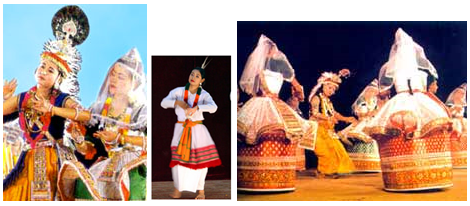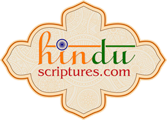DANCE FORMS OF MANIPUR
Contents
· Manipuri dance
· Lai - Haraoba
· NongdaiJagoi
· Tribal Dances of Manipur
Manipuri dance
The entire spectrum of Manipuri dance forms may be categorised into the following four categories:
- Thang or the dance of the martial ritual dancers
- The Jatra dancers
- Traditional Sankirtana dancers
- Other various Ballad forms
It is a general belief that Radha and Krishna were the original authors of the Manipuri dance forms and it is further believed that Goddess Uma and Lord Shiva performed the dances in the Lasya style at Manipur. Today, the Manipuris are highly involved with their danceform and it is essentially an integral part of their lives.
Lai –Haraoba
This dance form is believed by the Manipuris to represent the beginning of the world itself. The Lai- Haraoba is celebrated on the occasion of completion of the construction of human habitation by Atiya Guru and his team of nine men and seven women, upon the instructions by Guru Sidaba, the highest Lord of the dark vacuum. The inhabitation was constructed after a lot of attempts at inhibiting the progress of the work. The dance depicts the twelve sequences in the process of creation.
Lai Haraoba is dedicated to Gods Pakhangba, Thangjing etc. There are three main forms of Lai Haraoba as follows:
- Moirang Lai-Haraoba- Celebrated in honor of Lord Thangjing
- Kanglei Lai-Haraoba- Celebrated in the palace
- Chakpa Lai- Haraoba- Is observed by the Loi people
It is usually celebrated in the Manipuri month of Kalen i.e. the months of April/May and continues for almost a week. The deities are represented by a pair a bamboo tubes, with clothes placed below. The dance is divided into seven sections or parts as follows:
- Lai Ikouba- Calling Lai out of water
- LaibouJagoi- Represents the life cycle of Lai
- PanthaibiJagoi- Depicts the romantic episodes between NangpokNingthou and Panthoibi
- LairenMathek- Communal dance representing the Python
- OugriHangel- Communal dance to bring wealth and prosperity
- ThoubalChongba- A dance in the moon light
- Nongkarel- Performed at the end of the festival
NongdaiJagoi
The NongdaiJagoi is performed to celebrate the commencing of the splitting of the sky and rainbow by Guru Sidaba. Also known as the Leitai dance, this dance form depicts skyward movement of the hands, circular movement of the waists and sideward movement of the hands, depicting the different sequences in the creation of the world.
Tribal Dances of Manipur
Tribal dances are an integral part of the Manipuri culture. They have evolved from the admiration of nature, war dances, superstitions and satiating the spirits. The most popular of the tribal dances of Manipur are as follows:
- Hansengav- The tempo is slow at the start but steadily increases. Boys and girls, unmarried girls usually participate and they dance alternately with the music, by forming a circle.
- ToonagaLomna- In a much similar fashion, boys and girls dance in a circular layout, which slowly converges at the centre.
- Heng Naga Toona- The boys and girls stand in a parallel formation and sideward steps are taken alternately, in tune with the accompanying music.
- TinkoomGueinaTonaggaLamay- A stationary circle is formed by the girls and boys, with two girls dancing at the centre of the circle.
- Chan Lam- It is performed by men arranged in a circular pattern. They alternate their steps forward and backwards and the dance is intersperses with chanting of Ho!Ho!Ho!
- Bamboo Dance- This form of dance is performed especially by the Lushai of Chandrapur and is basically performed by the girls. The girls beautifully synchronize and dance between the moving bamboo sticks, which are also done very skilfully by another group of girls. The costumes for this dance are very bright and colourful, adding to its charm.

